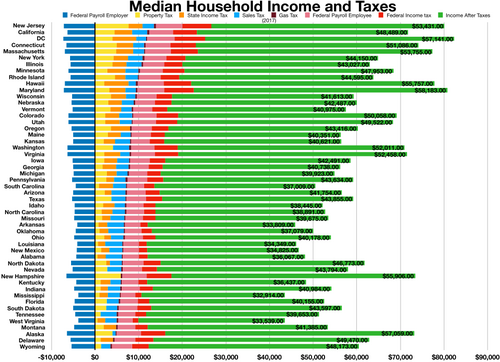Our website is made possible by displaying online advertisements to our visitors.
Please consider supporting us by disabling your ad blocker.
Property tax in the United States

-$500, $1,000, $2,000, $3,000, $4,000, $5,000, $6,000, $7,000+
| This article is part of a series on |
| Taxation in the United States |
|---|
 |
|
|

Most local governments in the United States impose a property tax, also known as a millage rate, as a principal source of revenue.[1] This tax may be imposed on real estate or personal property. The tax is nearly always computed as the fair market value of the property, multiplied by an assessment ratio, multiplied by a tax rate, and is generally an obligation of the owner of the property. Values are determined by local officials, and may be disputed by property owners. For the taxing authority, one advantage of the property tax over the sales tax or income tax is that the revenue always equals the tax levy, unlike the other types of taxes. The property tax typically produces the required revenue for municipalities' tax levies. One disadvantage to the taxpayer is that the tax liability is fixed, while the taxpayer's income is not.
The tax is administered at the local government level. Many states impose limits on how local jurisdictions may tax property. Because many properties are subject to tax by more than one local jurisdiction, some states provide a method by which values are made uniform among such jurisdictions.
Property tax is rarely self-computed by the owner. The tax becomes a legally enforceable obligation attaching to the property at a specific date. Most states impose taxes resembling property tax in the state, and some states also tax other types of business property.
- ^ Hellerstein, Jerome H., and Hellerstein, Walter, State and Local Taxation, Cases and Materials, Eighth Edition, 2001 (hereafter "Hellerstein"), page 97
Previous Page Next Page


